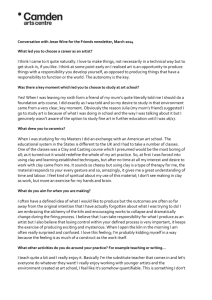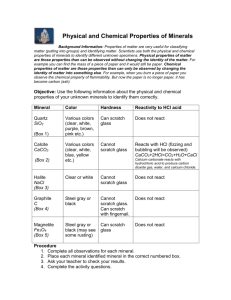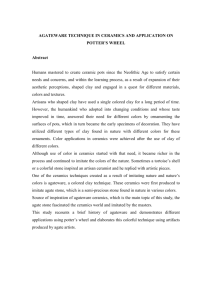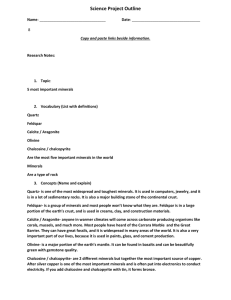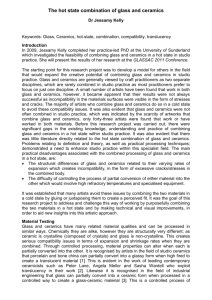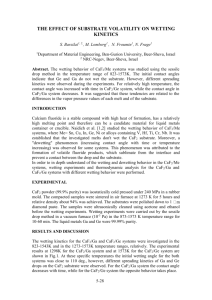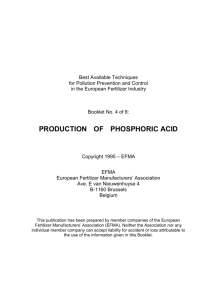Industrial Rocks and Minerals
advertisement
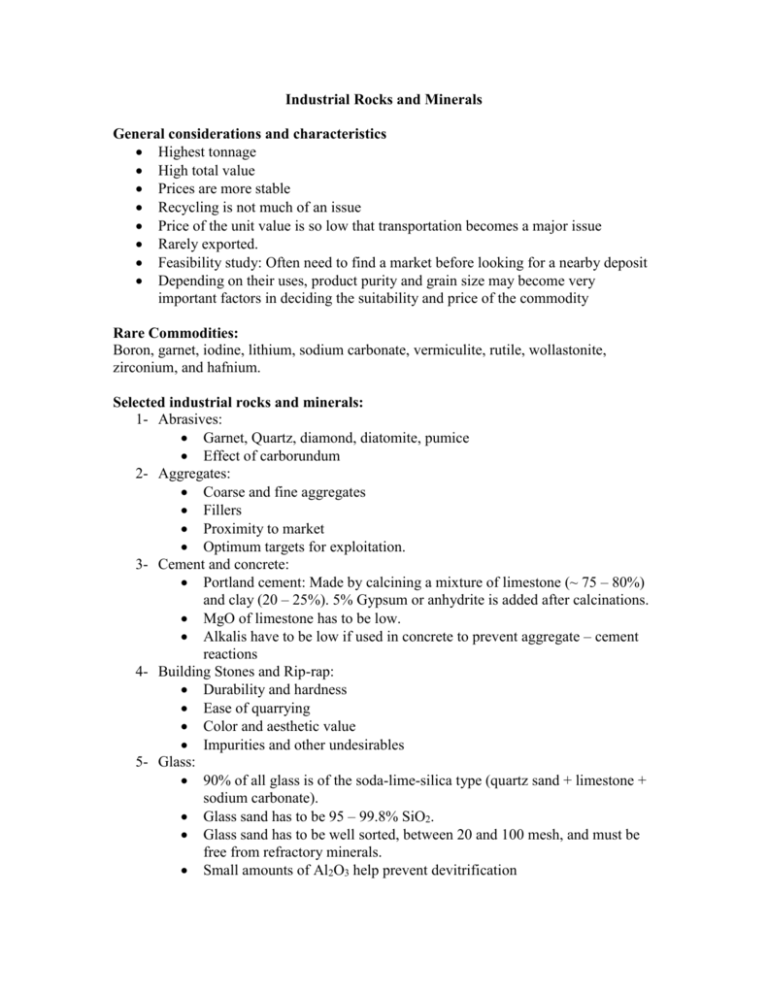
Industrial Rocks and Minerals General considerations and characteristics Highest tonnage High total value Prices are more stable Recycling is not much of an issue Price of the unit value is so low that transportation becomes a major issue Rarely exported. Feasibility study: Often need to find a market before looking for a nearby deposit Depending on their uses, product purity and grain size may become very important factors in deciding the suitability and price of the commodity Rare Commodities: Boron, garnet, iodine, lithium, sodium carbonate, vermiculite, rutile, wollastonite, zirconium, and hafnium. Selected industrial rocks and minerals: 1- Abrasives: Garnet, Quartz, diamond, diatomite, pumice Effect of carborundum 2- Aggregates: Coarse and fine aggregates Fillers Proximity to market Optimum targets for exploitation. 3- Cement and concrete: Portland cement: Made by calcining a mixture of limestone (~ 75 – 80%) and clay (20 – 25%). 5% Gypsum or anhydrite is added after calcinations. MgO of limestone has to be low. Alkalis have to be low if used in concrete to prevent aggregate – cement reactions 4- Building Stones and Rip-rap: Durability and hardness Ease of quarrying Color and aesthetic value Impurities and other undesirables 5- Glass: 90% of all glass is of the soda-lime-silica type (quartz sand + limestone + sodium carbonate). Glass sand has to be 95 – 99.8% SiO2. Glass sand has to be well sorted, between 20 and 100 mesh, and must be free from refractory minerals. Small amounts of Al2O3 help prevent devitrification Other mineral products (borates, Se, As, CaF2) added to obtain certain characteristics. 6- Gypsum: Alabaster: ornamental stone Plaster of Paris: heated form of gypsum used for casts, plasterboard, … etc. Occurs as part of the evaporite succession Sequence of formation of evaporites: Calcite dolomite gypsum halite sylvite Mg – salts. Exported by a few countries. 7- Asbestos: Chrysotile and Crocidolite Serpentinites and their veins Cancer hazard and role of fiber glass 8- Clay minerals: Kaolinite: China clay (paper filler, porcelain and ceramics, cosmetics) and Ball clay (pottery and ceramics, refractories, and insecticides). Halloysite: Pottery and ceramics Kaolinite + illite: bricks and tiles. Bentonite (smectite): Oil well drilling fluids, suspending agents. 9- Fluorspar: Acid grade (97% CaF2): used in the manufacture of HF and cryolite (flux). Ceramic grade (80 – 96% CaF2): used for the manufacture of ceramics, enamels, glasses and glass fibers. Metallurgical grade (> 60% CaF2): used in the iron and steel industry. 10- Graphite: 11- Olivine: Uses: Slag conditioner in iron and steel making; foundry sand; blast cleaning agent; refractory bricks. Extracted from large dunite bodies. 12- Perlite: Used primarily as an insulator with its high heat resistance and high sound absorption. Hydrated obsidian: restricted to areas of Tertiary and Quaternary volcanism. Various grades resulting from differences in the degree of hydration. 13- Pyrophyllite and Sillimanite: 14- Phosphate Rocks: Uses: 90% of all phosphates is used as fertilizer, 10% used for animal feedstuff, detergents, food and drink products, fire extinguishers, dental products, and surface treatment of metals. Sources of the commodity: 76% from chemical sedimentary beds, 23% from carbonatites and other igneous rock complexes, and 1% from Guano. Textures: oolitic, nodular, pelletal, or micritic, closely mixed with calcite, quartz, and clay minerals. Examples: the Permian Phosphoria formation of Idaho and Montana; significant deposits in Morocco and Peru. Modern day examples: of the coast of Peru, and the SE Georgia embayment. Origin: Upwelling of deep, cold seawater and its longshore flow across shallow, warm, well – lit, continental shelf environments. The cold water has the ability to dissolve more calcite (and apatite) than warm water. Upwelling causes a decrease in the CO2 of the seawater, which in turn results in an increase in its pH. The increase of pH (to values > 7) decreases the solubility of apatite. The higher T has the same effect, so phosphate is precipitated in the shelf environment probably in the form of cryptocrystalline fluorapatite known as “collophane”. The main source of this phosphate was the upwelled biomass. The energetic environment reworks the precipitated phosphate to form pellets, oolites, …. etc. A significant amount of phosphate also forms during diagenesis by the replacement of carbonates. Best location for deposition is embayments and irregularities of the shoreline, which allows for the development of eddies and “Gyres”. Deposition of phosphorites seems to be tied to periods of transgressions (following the upwelling), which helps rework these deposits, and moves the phosphate grains towards the shore where they are trapped in those embayments.

